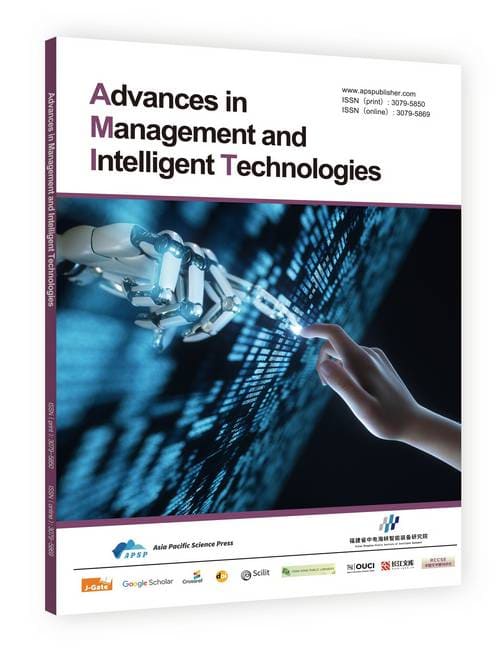Evaluation of Ningxia Gojiberry Traceability System Construction and Analysis of Its Driving Factors
DOI:
https://doi.org/10.62177/amit.v1i3.390Keywords:
Gojiberry Industry, Traceability System, Geographic Detector, Quality and Safety, NingxiaAbstract
Building a comprehensive Gojiberry traceability system is a key measure to enhance the quality and safety of Ningxia's authentic medicinal materials. This study constructs an evaluation system from four dimensions: "technical support, information coverage, quality assurance, and market benefits," uses the entropy method to measure the traceability construction level in Ningxia's main Gojiberry production areas from 2021 to 2024, and employs the geographic detector to analyze driving mechanisms. The research shows that the comprehensive index of Ningxia's Gojiberry traceability system grew at an annual average rate of 12.3%, with Zhongning County leading in construction level. Policy support (q=0.682) and IoT technology penetration (q=0.573) are the primary driving factors, and the interaction between leading enterprise participation and environmental regulation (q=0.84) is significant. It is recommended to strengthen government-enterprise collaborative innovation and establish a "blockchain + base certification" dual-driven model[1].
Downloads
References
Yan, S., Zhou, H., Yang, L., Tian, X., & Liu, G. (2024). Study on the origin traceability of Lycium barbarum based on trace elements and multivariate statistics. Journal of Northwest University for Nationalities (Natural Science Edition), 45(3), 23–31.
Kai, J., Zhang, Y., Lu, Y., Wang, X., Chen, C., Wang, C., Gou, C., & Liu, Z. (2024). Isotope and element characteristics of Lycium barbarum in different growth periods and stubbles and their effects on traceability. Journal of Nuclear Agriculture, 38(9), 1724–1733.
Yuan, W., Jiang, H., Tang, S., Zhang, C., Zhou, Y., & Zhou, H. (2024). Origin traceability and identification of Lycium barbarum in Ningxia based on hyperspectral imaging technology. Food Science, 45(6), 254–260.
Su, S. (2022, December 20). Application of non targeted technology in screening and origin traceability of organic pollutants in exported Lycium barbarum L. Xining Customs Technology Center, Qinghai Province.
Kai, J. (2022, September 1). Study on the variation law of mineral elements and the screening of traceability index of Lycium barbarum L. in Ningxia during its growth period. Ningxia Hui Autonomous Region, Ningxia Institute of Agricultural Product Quality Standards and Detection Technology.
Lian, S. (2022). Research on origin traceability technology of Lycium barbarum based on element content and stable isotope ratio [Master’s thesis, Shandong Agricultural University].
Feng, L. (2021, November 29). Chinese wolfberry product traceability analysis service management system. Guazhou Lecun Taotao E-commerce Co., Ltd., Gansu Province.
Lin, H. (2021). Application of nuclear magnetic resonance technology in origin traceability and quality comparison of Chinese wolfberry [Master’s thesis, Xiamen University].
Yang, S. (2020, August 13). Integrated innovation and application of traceability technology for Lycium barbarum seedlings and dried and fresh fruits. Ningxia Hui Autonomous Region, Institute of Agricultural Economy and Information Technology, Ningxia Academy of Agriculture and Forestry Sciences.
Wang, Z. (2020). Origin traceability of Lycium ruthenicum and hypoglycemic mechanism of anthocyanins [Master’s thesis, Shaanxi Normal University].
Downloads
Issue
Section
License
Copyright (c) 2025 Jiapeng Zhao, Yu Li, Yaqin Ma, Zhiqi Xu, Shidai Li

This work is licensed under a Creative Commons Attribution-NonCommercial 4.0 International License.

















